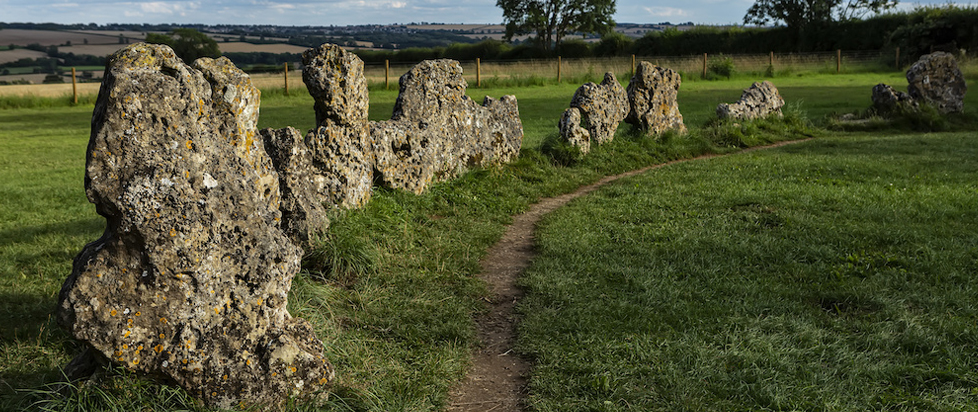
Signalled Space

This column is a reprint from Unwinnable Monthly #178. If you like what you see, grab the magazine for less than ten dollars, or subscribe and get all future magazines for half price.
———
What does digital grass feel like?
———
Early in 2022, I visited the Rollright Stones in south England. It had been raining, and in front of the largest stone footfall and water had combined into a puddle that said people have been here. Thousands of people across thousands of years have stood in front of that stone, wearing away the grass and dirt.
There, in front of that enigmatic stone, touched by the evidence of so many other people pausing in the same spot, I had a sinfully Gamer thought: This is just like Elden Ring.
Cursed as the timing of this thought was, the asynchronous multiplayer of Elden Ring has stuck with me to this day. Although not the only game with a blurred line between a shared and individual world, it was the first one that I had experienced, both by playing and in how it broke its boundaries. Its world quickly encompassed social media, with shared messages becoming memes: fort night, try jumping, dog.
Elden Ring is a space you explore alone that is stacked on top of a million other spaces that each bleed through into one another via the messages. Places where people congregate have lots of glowing text on the floor, just like the tallest Rollright stone has a worn away path. These places also escape out into the wider world through screenshots and videos, like how you can see the widened path in images of the biggest Rollright.
The feeling of together-aloneness is the same in both Elden Ring’s digital world and the damp field in real life. But it’s a slightly strange feeling. Had the stones been crowded, I would have been somewhat offput, and the marker of people having clustered there before is, strictly, damage. At some stone circles, high numbers of visitors walking close to the stones and climate change induced wetness have caused dangerous levels of erosion. And Elden Ring’s memes may have been funny for a while, but there’s a saturation of but hole jokes that was passed easily within a few days.

And yet if there were no evidence of other people, both places would lose their charm. In The Consumption of Tourism, a 1990 paper by sociologist John Urry, he writes that “[some] places are designed as public places.” Thinking about how each of these places was designed, the Rollright stones were presumably designed to be public, but whether they were also considering the lone reflector joined only by the evidence of other people is unknowable. In Elden Ring, though, this is a clear part of FromSoftware’s intention.
“[Other people] indicate that this is the place to be and that one should not be elsewhere,” writes Urry of crowded tourist spots. Messages can signpost the complex open world of Elden Ring. The memeing of its messages on social media also functions as an advertisement for the game, drawing in new players via semi-organic hype.
But whether intentional or not, the same can be said for the Rollrights, as well as other stone circles. The Rollrights are relatively well known, but the presence of a path made apparently by the footfalls of other people may encourage those who are seeing the place for the first time to go themselves. Less walked stone circles do not become tourist attractions in the same way – like Mitchell’s Fold, or to an even greater extent its sister circle the Hoarstones, which is in a grassy bog and, from experience, extremely hard to access.
Contrast with Stonehenge, which, while never left unoccupied for long in the first place, at least during its opening hours, has evidence of its tourist attraction status slashed into the ground, a paved pathway asymmetrically bisecting the earthworks so that people can walk a predetermined path without getting too close to the stones themselves. The path is there because Stonehenge is the stone circle to visit. The path, per Urry’s argument, shows that one should be there and not elsewhere.
And as well as indicating that one should be in Elden Ring itself, the game’s messages show clearly where one should go inside that world: next to a turtle, calling it dog.
———
Jay Castello is a freelance writer covering games and internet culture. If they’re not down a research rabbit hole you’ll probably find them taking bad photographs in the woods.




